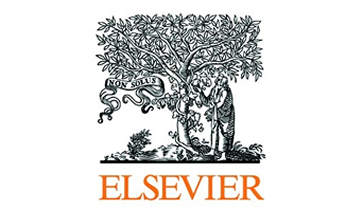Volume 47, Issue 4, 11 February 1994, Pages 711–715
Effects of anandamide on cannabinoid receptors in rat brain membranes
- Department of Physiology and Pharmacology, Bowman Gray School of Medicine, Wake Forest University, Winston-Salem, NC 27157, U.S.A.
Abstract
 Anandamide (arachidonylethanolamide) is a compound recently isolated from porcine brain as a putative endogenous ligand at cannabinoid receptors. The present studies examined the effects of anandamide on cannabinoid receptor binding sites and adenylyl cyclase in rat brain membranes. Receptor binding experiments, conducted at 25° for 90 min, apparently resulted in significant degradation of anandamide, since anandamide (10 μM) had little effect on [3H]WIN 55212-2 binding in cerebellar membranes. Addition of the general serine protease inhibitor phenylmethylsulfonyl fluoride (PMSF) protected against this degradation, resulting in an ic50 value of 90 nM for anandamide versus [4H]WIN 55212-2 binding. Anandamide inhibited adenylyl cyclase in cerebellar membranes in a GTP-dependent manner, exhibiting a maximal inhibition level slightly less than that of WIN 55212-2 and CP-55,940, with an ic50 value of 1.9 μM. The effect of anandamide on adenylyl cyclase was region-specific, with maximal inhibition occurring in cerebellum and striatum. These results suggest that anandamide acts at G-protein-coupled cannabinoid receptors in brain with properties similar to those of exogenous cannabinoids.
Anandamide (arachidonylethanolamide) is a compound recently isolated from porcine brain as a putative endogenous ligand at cannabinoid receptors. The present studies examined the effects of anandamide on cannabinoid receptor binding sites and adenylyl cyclase in rat brain membranes. Receptor binding experiments, conducted at 25° for 90 min, apparently resulted in significant degradation of anandamide, since anandamide (10 μM) had little effect on [3H]WIN 55212-2 binding in cerebellar membranes. Addition of the general serine protease inhibitor phenylmethylsulfonyl fluoride (PMSF) protected against this degradation, resulting in an ic50 value of 90 nM for anandamide versus [4H]WIN 55212-2 binding. Anandamide inhibited adenylyl cyclase in cerebellar membranes in a GTP-dependent manner, exhibiting a maximal inhibition level slightly less than that of WIN 55212-2 and CP-55,940, with an ic50 value of 1.9 μM. The effect of anandamide on adenylyl cyclase was region-specific, with maximal inhibition occurring in cerebellum and striatum. These results suggest that anandamide acts at G-protein-coupled cannabinoid receptors in brain with properties similar to those of exogenous cannabinoids.
Keywords
- Δ-tetrahydrocannibinol;
- adenylyl cyclase;
- arachidonylethanolamide;
- phenylmethylsulfonyl fluoride
Abbreviations
- THC, Δ9-tetrahydrocannabinol;
- PMSF, phenylmethylsulfonyl fluoride;
- BSA, bovine serum albumin
There are no figures or tables for this document.
Copyright © 1994 Published by Elsevier Inc.




